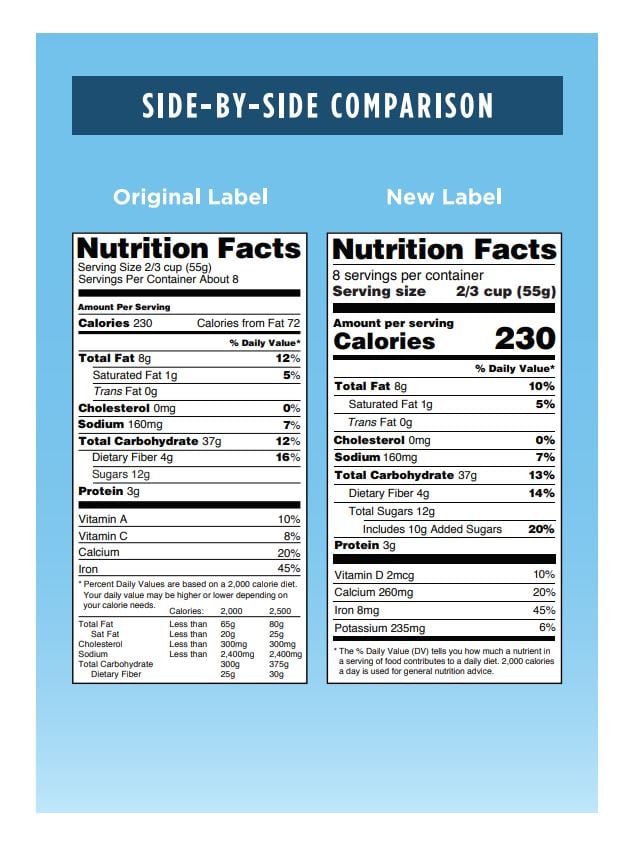"Many old and new food policies focus on labeling, whether on food packages or restaurant menus. Remarkably, the effectiveness of these labels, whether for changing consumers' choices or industry product formulations, has not been clear," senior and corresponding author Dariush Mozaffarian, M.D., Dr.P.H., dean of the Friedman School, said.
"Our findings provide new evidence on what might work, and what might not, when implementing food labeling."
A pooled analysis (published in the American Journal of Preventative Medicine) of 60 interventional studies comprised of two million unique observations were reviewed, including consumer reported dietary intakes, purchases, and sales receipts (published between 1990 and 2014).
Across all studies, the average intervention duration was 69.8 weeks (range: 3 days to 9 years), except for laboratory studies, which were typically conducted over one to three sessions. In 14 studies, food labeling was combined with other components such as education, mass media campaigns, economic incentives, or direct regulation (restrictions, bans, requirements of the contents or availability of certain nutrients or food/beverage items).

In May 2016, the USA FDA announced updates to nutrition facts labeling that included new standards on serving sizes of foods, highlighting calorie counts in larger font, and calling out added sugar content.
The FDA extended the compliance dates for the Nutrition Facts and Supplement Facts label final rule and the Serving Size final rule, from July 26, 2018 to Jan. 1, 2020, for manufacturers with $10 million or more in annual food sales. Manufacturers with less than $10 million in annual food sales would receive an extra year to comply – until Jan. 1, 2021.
Food labels and healthier eating?
According to researchers, product food labeling – which included standardized provision of nutrition or health information and other health-related claims, icons, symbols, and logos – reduced consumers’ intake of calories by 6.6%, total fat by 10.6%, and other unhealthy food options by 13%.
Labeling also increased consumers’ vegetable consumption by 13.5%, researchers noted.
However, labeling did not significantly impact consumer intakes of other targets such as total carbohydrate, total protein, saturated fat, fruits, whole grains, or other healthy options.
Researchers also examined the effects of label type, placement, and other characteristics. No consistent differential effects were found by label placements (menu, package, other point-of-purchase), label types (e.g., traffic light, nutrient content), type of labeled products, whether labeling was voluntary or mandatory, or several other factors.
The study’s findings suggest that the general presence or absence of information may be more relevant to consumers and industry than the specific type of label.
Industry responses and reformulation
The study also accounted for the impact of food labeling policies on industry responses in the form of product reformulation by food and beverage manufacturers. For example, the mandatory addition of trans fat content on the Nutrition Facts label led some food and beverage manufacturers to reformulate their ingredients.
Reformulation outcomes were evaluated by six studies and researchers found that food labeling policies significantly reduced trans-fat content (-64.3%) and sodium (-8.9%).
No significant effects of labeling were identified for industry formulations of total calories, saturated fat, dietary fiber, other healthy components (e.g., protein and unsaturated fat), or other unhealthy components (e.g. total fat, sugar, and dietary cholesterol), researchers noted.
"For industry responses, it's interesting that the two altered components-trans fat and sodium-are additives," Mozaffarian added.
"This suggests that industry may be more readily able to alter additives, as opposed to naturally occurring ingredients such as fat or calories, in response to labeling. It will be interesting to see whether this will translate to added sugar, newly added to the Nutrition Facts Panel on food labels in the United States."
The FDA defines added sugar as "sugars that are either added during the processing of foods, or are packaged as such, and include sugars (free, mono- and disaccharides), sugars from syrups and honey, and sugars from concentrated fruit or vegetable juices that are in excess of what would be expected from the same volume of 100 percent fruit or vegetable juice of the same type."

